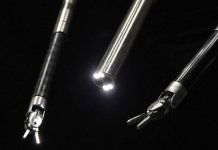
Why do the signals from quantum bits in diamonds often appear messy and inconsistent?
A team from Stanford University, led by Jennifer Dionne, tackled this thorny issue by examining the atomic-level makeup of diamonds.
Their findings, published in the journal PNAS, reveal that the internal structure of diamonds significantly impacts the behavior of quantum bits, or qubits, embedded within them.
Diamonds have long been considered ideal for hosting quantum information due to their stable properties.
However, the signals emitted from these quantum bits can be erratic. The Stanford team discovered that these inconsistencies are largely due to the diamond’s varied internal structure.
The team focused on a specific type of qubit called a silicon vacancy center. This is created by replacing two carbon atoms in the diamond with one silicon atom, leaving gaps on either side of the silicon. These centers are promising for advanced quantum sensors and communication networks.
Using a powerful scanning transmission electron microscope, the researchers examined diamond nanoparticles, which are just a few hundred nanometers across. These particles contain multiple silicon vacancies scattered like holes in a sponge. The team aimed to understand how these vacancies produce photons, the particles of light that carry quantum information.
In a perfect scenario, each vacancy would produce photons of the same color and brightness consistently. However, in reality, the photons emitted varied widely in these properties. This led the researchers to investigate further.
They found that diamonds are composed of regions, or domains, with different atomic orientations, similar to the grains in wood. By examining these domains individually, the team observed that the photon emissions differed from one region to another. The grain structure of each domain affects the shape and strain on the silicon vacancies within it, influencing the properties of the emitted photons.
The research showed that even vacancies just a few nanometers apart could produce significantly different photon emissions. This discovery explained why previous measurements, which treated the entire diamond as a single source, resulted in inconsistent signals.
“The vacancy’s position within the crystal matters,” said Dionne. “The diamond’s different crystal facets and the particular orientation of the crystal can have a significant impact on both the brightness and the color of the emission.”
Daniel Angell, the study’s first author, noted, “We saw a perfectly discrete jump in the emission signal when two vacancies were within only 5 nanometers of each other. It’s really compelling data.”
The team’s work provides a high-resolution map correlating grain structure with photon emissions, helping researchers better understand their own findings. This clarity is not just limited to silicon vacancy centers but can be applied to other types of qubits as well.
“The door has been opened for a vast number of studies that enable precise structure-function correlation in quantum systems, and ultimately improved quantum communications, quantum networking, and quantum sensing,” Dionne said.
By taking a closer look at the “trees” within the “forest” of the diamond, the Stanford team has made significant strides in understanding and improving the consistency of quantum signals in diamonds.



